Potřebujeme váš souhlas k využití jednotlivých dat, aby se vám mimo jiné mohly ukazovat informace týkající se vašich zájmů. Souhlas udělíte kliknutím na tlačítko „OK“.
ASTM D2990-09
Standard Test Methods for Tensile, Compressive, and Flexural Creep and Creep-Rupture of Plastics
Automaticky přeložený název:
Standardní zkušební metody pro pevnost v tahu, v tlaku a v tahu za ohybu Pomalá a Creep-ruptura plastů
NORMA vydána dne 1.9.2009
Informace o normě:
Označení normy: ASTM D2990-09
Poznámka: NEPLATNÁ
Datum vydání normy: 1.9.2009
Kód zboží: NS-22197
Počet stran: 20
Přibližná hmotnost: 60 g (0.13 liber)
Země: Americká technická norma
Kategorie: Technické normy ASTM
Kategorie - podobné normy:
Anotace textu normy ASTM D2990-09 :
Keywords:
creep, creep-rupture, plastics, Compression testing--plastics, Creep, Creep rupture, Flexural testing--plastics, Tensile properties/testing--plastics, ICS Number Code 83.080.01 (Plast in general)
Doplňující informace
| Significance and Use | ||||||||||||||||||||
|
Data from creep and creep-rupture tests are necessary to predict the creep modulus and strength of materials under long-term loads and to predict dimensional changes that may occur as a result of such loads. Data from these test methods can be used: (1) to compare materials, (2) in the design of fabricated parts, (3) to characterize plastics for long-term performance under constant load, and ( 4) under certain conditions, for specification purposes. Before proceeding with this test method, reference shall be made to the specification of the material being tested. Any specimen preparation, conditioning, dimensions, and/or testing parameters covered in the material specification shall take precedence over those mentioned in this test method, except in cases where to do so would conflict with the purpose for conducting testing. If there are no material specifications, then the default conditions apply. |
||||||||||||||||||||
| 1. Scope | ||||||||||||||||||||
|
1.1 These test methods cover the determination of tensile and compressive creep and creep-rupture of plastics under specified environmental conditions (see 3.1.3). 1.2 While these test methods outline the use of three-point loading for measurement of creep in flexure, four-point loading (which is used less frequently) can also be used with the equipment and principles as outlined in Test Methods D 790. 1.3 For measurements of creep-rupture, tension is the preferred stress mode because for some ductile plastics rupture does not occur in flexure or compression. 1.4 Test data obtained by these test methods are relevant and appropriate for use in engineering design. 1.5 The values stated in SI units are to be regarded as the standard. The values in parentheses are for information only. 1.6 This standard does not purport to address all of the safety concerns, if any, associated with its use. It is the responsibility of the user of this standard to establish appropriate safety and health practices and determine the applicability of regulatory limitations prior to use. A specific warning statement is given in 6.8.2. Note 1—This standard and ISO 899 Parts 1 and 2 address the same subject matter, but differ in technical content (and results cannot be directly compared between the two test methods). ISO 899 Part 1 addresses tensile creep and creep to rupture and ISO 899 Part 2 addresses flexural creep. Compressive creep is not addressed in ISO 899. |
||||||||||||||||||||
| 2. Referenced Documents | ||||||||||||||||||||
|
Podobné normy:
Historická
1.4.2010
Historická
15.12.2012
Historická
1.10.2010
Historická
1.12.2011
Historická
15.3.2007
Historická
15.3.2007
Doporučujeme:
Aktualizace technických norem
Chcete mít jistotu, že používáte pouze platné technické normy?
Nabízíme Vám řešení, které Vám zajistí měsíční přehled o aktuálnosti norem, které používáte.
Chcete vědět více informací? Podívejte se na tuto stránku.


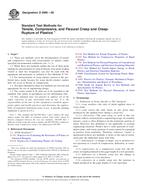
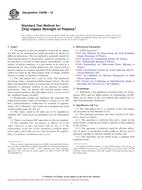 ASTM D4508-10
ASTM D4508-10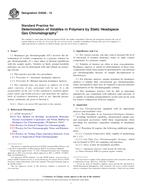 ASTM D4526-12
ASTM D4526-12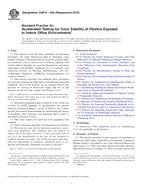 ASTM D4674-02a(2010)..
ASTM D4674-02a(2010)..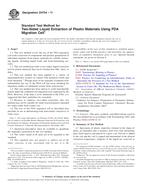 ASTM D4754-11
ASTM D4754-11 ASTM D5023-07
ASTM D5023-07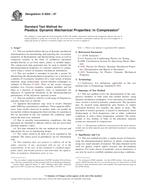 ASTM D5024-07
ASTM D5024-07
 Cookies
Cookies
